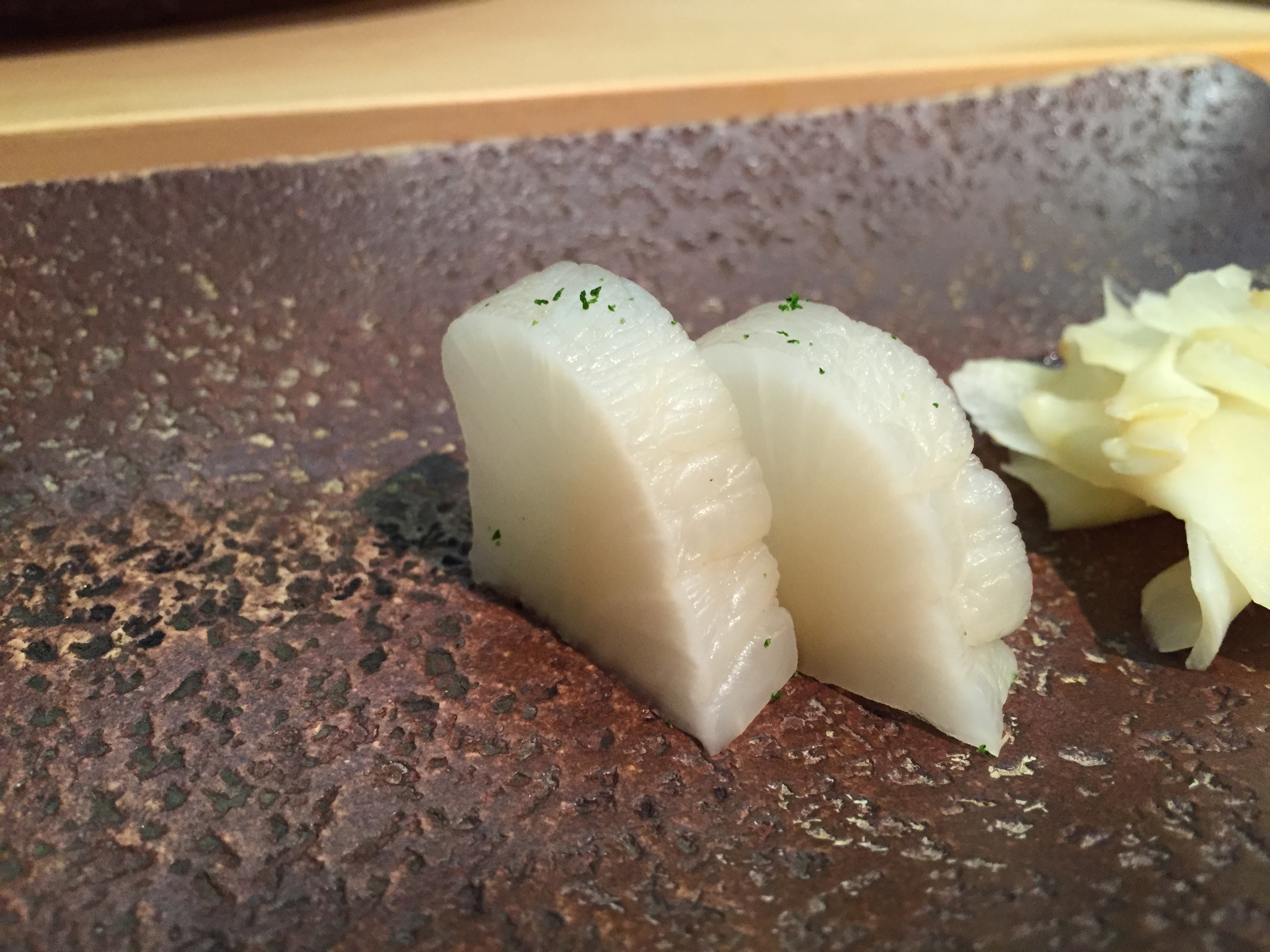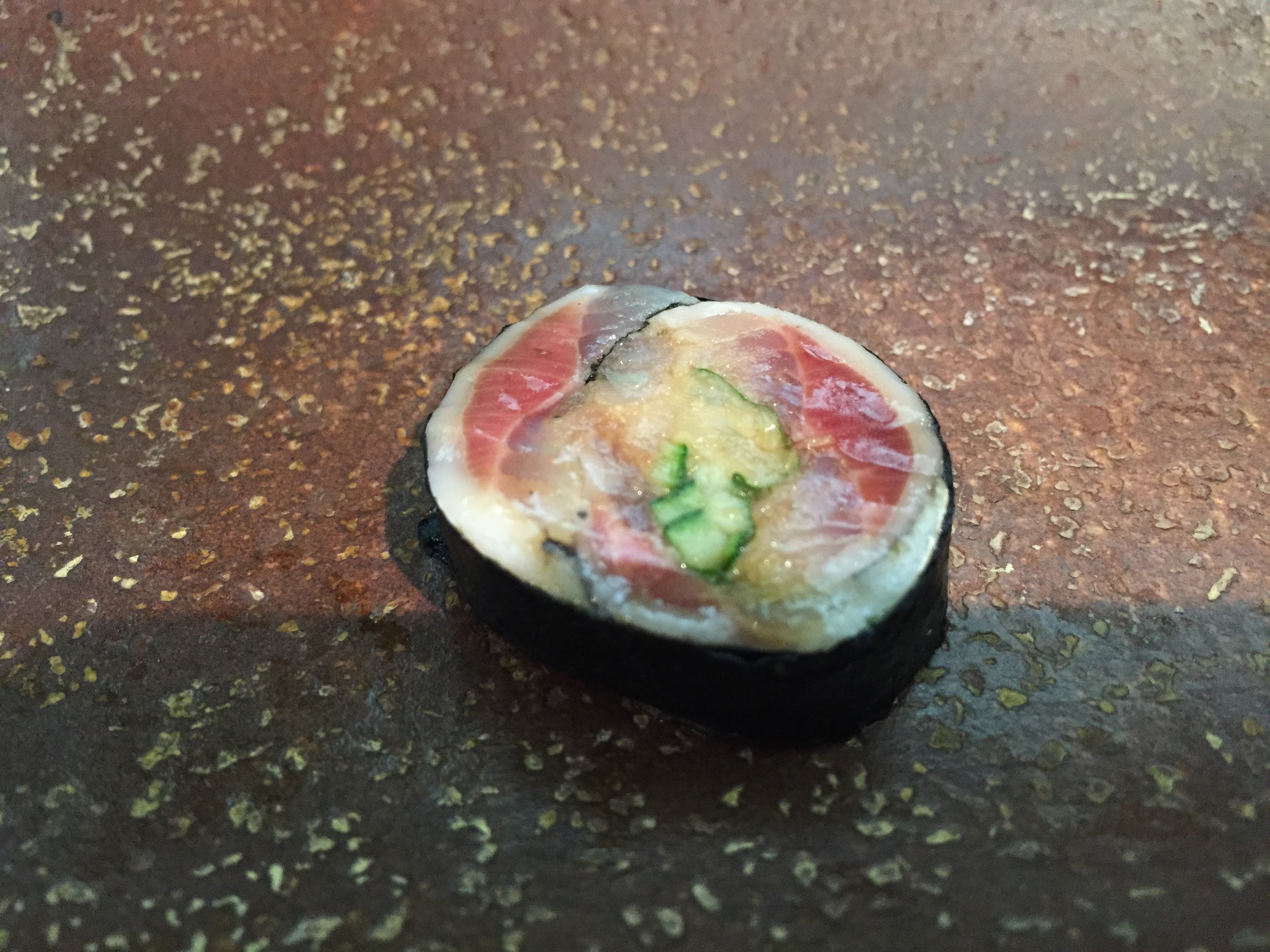Note: Nakazawa-san left Sushi Sho at the end of 2015 to open a new branch at the Ritz Carlton in Honolulu. As explained below, the original intention was to close the Yotsuya location, but instead, Takashi Shingo (of Sho-offshoot Takumi Shingo) has stepped in as the head chef. It is unclear if this is a permanent arrangement, but for now the shop remains open.
- Cost: JPY 22,000 JPY
- Size: 9 seats at counter
- Style: otsumami + sushi omakase
- Reserved: 6 weeks in advance
The 'Sho'-style, alongside a few others, is one of the most distinctive styles of sushi omakase in Tokyo. Developed by Keiji Nakazawa, the restaurant has begat a number of spin-offs run by his former students and itamae, and even other unrelated shops that claim some influence from Sho like Umi or Sushi Kimura.
The original Sho location (sometimes referred to as 'honten'), still run by Nakazawa, will close in late 2015 to move to the Ritz Carlton in Honolulu. It remains to be seen how such a drastic relocation will impact the food or pricing, as it no doubt did with a place like Araki when that shop moved to London. But with so many disciples operating shops in Tokyo, this style will certainly live on in Japan.
Any discussion of Sho should necessarily reference the unique elements of this style:
- A focus on precise aging for all types of fish, but most notably with maguro. Almost every meal at a Sho-style sushiya includes a nigiri with 10 day-aged chutoro. Maguro are offered at a variety of ages and slicing styles throughout a typical meal.
- Tsumami are alternated with nigiri. This makes the course well-suited to drinking with sake, and Nakazawa-san is excellent at selecting pairings from a wide variety at his shop.
- Different types of shari are paired with different types of neta. Most commonly, there is one batch of akazu-seasoned rice for richer items and gomezu-seasoned rice for lighter items, though on my visits I noted multiple batches held at different temperatures at different points in the meal.
- Variety is abundant. A meal can easily stretch upwards of 30 (or in the case of a shop like Sushisho Masa, 40) items.
- Several nigiri are known as signature items of the style. A few examples: ankimo with a slice of pickled melon ('-narazuke'); kinmedal torched crispy and topped with daikon oroshi; an aji "sandwich" stuffed with ginger/shiso/myoga. You get the idea.
In recent years, the shop has enjoyed significant press coverage outside of Japan, sometimes bearing the distinction of "the place that refused to be in Michelin guide". I find this designation kind of amusing, as many restaurants in Japan refuse to be in Michelin, and many high-end places go to great lengths to remain unlisted. I am not sure if the dramatic story of Nakazawa-san booting out Michelin reviewers mid-meal is apocryphal or not; it seems like a bit of a stretch.
I wish I could explain how Nakazawa-san developed such an influential style but I have only been to his shop less than a handful of times so can only speculate. Certainly many of the techniques (including the aging) are rooted in a focus on traditional methods of preparing sushi. (I do have a book that features a long interview with Nakazawa-san and Mikkio-san of Miyaha, but my kanji reading is extremely poor). I can only say that the Sho style, despite being popular and highly influential, is a bit polarizing amongst sushi enthusiasts in Japan, some of whom view it more as a counterpart to drinking sake and less as a standalone meal. (By the way, the focus on drinking over the sushi is taken to even greater length at places like the hugely popular Sushi Mitani, around which there is some debate over whether it should even be regarded as a 'real' sushiya).
In my own experience, I have found the omakase at Sushi Sho to be excellent. Otsumami are executed perfectly, as in an agemaki clam that was flavorful and cooked tender but not chewy, or a slice of unagi shirayaki that remained crisp on the outside yet meltingly soft and light on the inside. Sho is also the only shop I have been to in Japan that offers the two common styles of tamago side by side: the Kansai-style dashimaki (flavored with squid dashi) and more cake-like "kasutera/castella" style (flavored with ebi dashi). While the dashimaki was excellently executed, I found the kasutera tamago to be a bit too dense, though the flavors were clear and strong.
Nigiri are very well-balanced and carefully composed. I enjoy the pairing of shari types with specific neta, but on my visits have found the shari to be a little less firm than I like, with some broken bits. The neta quality is high, but perhaps shy of the top tier in Tokyo - which is fine, given that so much of the Sho-style relies on technique.
Of note is the house ice cream offered at the end of the meal, a truly nontraditional element. The flavors vary seasonally, from more conventional tastes (watermelon, peach, banana) to those that are more obscure (tomato, salt, wasabi, etc.). They are all made with fresh ingredients and are really good: it is not a coincidence that diners are invited to choose two flavors to pair together.
I can say without reservation that my meals at Sho have been some of my favorite experiences at any sushiya. I'm not sure if this is because my western palate is more excited by variety and surprise than by flawless ingredients or execution, or if the sushi is just really that good. I tend to believe the latter.





































